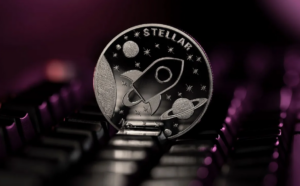- Coinbase Wallet is a mobile-friendly crypto wallet launched by the leading crypto exchange, Coinbase.
- It has many advanced features to enable super secure and private crypto transfers and storage.
- An exciting feature of the app is its dApp browser.
Coinbase Wallet is the crypto wallet offering of the world’s leading cryptocurrency exchange, Coinbase. It’s a non-custodial or self-custodial wallet used on mobile phones in the Coinbase app. It is a hot wallet used to store, send and receive a wide range of crypto assets, including various cryptocurrencies and NFTs.
It is important to note Coinbase’s crypto wallet is distinct from its native wallet, which stores the crypto assets purchased from the Coinbase exchange only. It can also be referred to as the ‘Coinbase account’, i.e., the account used on the exchange for trading crypto; it directly stores the purchased asset into a native wallet (must not be confused with an atypical cryptocurrency wallet).
Besides the wallet, the app also features a browser function on which several blockchains’ dApps can be accessed. The browser aims to simplify the UX for “surfing the Web3”, just like any other browser does for Web2.
Coinbase Wallet and the App
The company was launched in 2012, by American engineer Brian Armstrong and American investment banking trader, Fred Ehrsam, at San Francisco. The initial service was to provide a platform for buying and selling Bitcoin, but the company eventually expanded to become an exchange platform for almost all the cryptocurrencies of the world.
In 2017, the company launched Toshi, which was meant to serve as a platform to access dApps. But then in 2018, they rebranded Toshi entirely and changed it to be an app by the name– Coinbase Wallet. It’s a mobile app that serves as a non-custodial (also known as self-custodial) hot wallet as well as a browsing platform to access dApps from a host of blockchain networks in the entire DeFi ecosystem.
Before Toshi, Coinbase used an in-built wallet on the exchange platform itself. It was used to send, receive and store crypto assets that were traded on the exchange. It was like an account of the user but with many utilities of a wallet.
So, now we have the native wallet of users on Coinbase.com as well as the Coinbase Wallet app. The difference is the native wallet only supports digital assets traded via the Coinbase exchange, while the Coinbase Wallet is distinct from the company and the company has no access to the private keys of the wallet.
The keys are stored directly on the user’s device. The user does not need an account on Coinbase.com to use the Coinbase Wallet.
App Features
The app can be easily downloaded from PlayStore on Android phones and iOS on iPhone. It supports Bitcoin, Ethereum, Litecoin, Bitcoin Cash, Ripple, Stellar, Dogecoin, Lumen, Ethereum Classic, all ERC-20 Tokens, and many more.
Interestingly, many developers are using the app as a platform for building their mobile dApps. Hence, the app can be used for a range of DeFi activities such as lending protocols, staking pools, liquidation pools etc.
It can also be used for storage and transfer of NFTs including xNFTs and other interactive digital collectibles used in video games, can be rented out and other task completions to earn crypto rewards.
Like a normal crypto wallet, it can receive airdrops, participate in Initial Coin Offerings to earn ICO Tokens, whitelisting etc. Besides the transfer of funds, it enables users to access all the other crypto exchanges for trading activities, including but not limited to Coinbase, and access various NFT marketplaces for NFT trading.
But, one of the most attractive features of this app is the dApp browser that enables users to explore and access full scope of third-party dApps including video games, and NFT-related activities in the video games.
How to Use the Crypto Wallet?
On downloading the app, users can create a new wallet. An attractive feature here is that it can be accessed through a simple username to manage the assets. Once you’ve picked your username, there are multiple options of privacy preferences in order to secure your keys on your device.
Two types of profiles can be made— public and private. Public profiles can receive funds directly by anyone using Coinbase Wallet just with the username, while private profiles’ usernames can’t be searched by anyone.
The wallet can be secured by either a 6-digit code or a biometric. Now, this can be used as an entry barrier for enabling crypto transactions or enter the app itself, depending upon the user’s choice. Then, there’s also a backup option that generates a twelve-word recovery phrase in case you lose your device, or password, or want to recover your old wallet only.
Similarly, users wishing to retain their earlier account on the exchange Coinbase.com, can also integrate it on the new wallet. This can be done by using the previous account’s similar recovery phrase which they can launch instead of creating a new account. Then, they can transfer all of their assets held on the exchange to their self-custodian wallet.
The dApp Browser
Having a single platform to navigate all the dApps is a very promising feat. It is very much enshrined in the company’s roadmap as well to become a single browsing platform to unlock the wide range functionalities of the Web3. However, the surfing of the current dApp browser on the app clearly shows it’s far from achieving it.
First of all, there are major pitfalls of using the browser on iOS. While using Coinbase Wallet on an Apple phone, users cannot directly access any dApp directly on Coinbase’s browser. Users need to find URLs of various dApps from other sources, and then copy-paste the link to launch it on the wallet’s browser. It is not only about the horrible unintuitive UX this presents, it is also highly insecure and ill-advised to do so.
It looks very much a part of Apple’s policies to encumber Coinbase to allow people earn money using cryptocurrencies and use other dApps.
Apart from that, Android’s UI is full of major problems when the users use certain dApps. The display of the dApps is not well adapted for the mobile screen of the wallet browser, including the ones that are mobile-friendly on other browsers and available to be used on cell phones otherwise.
Certain dApps like MLB CryptoBaseball, Oasis.app, MakerDAO, CryptoKitty etc., cause major glitches in their operations— a problem encountered only when they are used on the wallet’s browser, and not otherwise.
However, it’s just an initiating point for such an attempt, which looks quite ambitious for the emerging Web3 landscape. Some of the faults aren’t Coinbase’s, while others are due to certain carelessnesses. It would be fair to expect betterments in the near future. As the Web3 technology unfolds further, more and more stakeholders are going to jump in to secure the gateway of the future of the internet. And as such, Coinbase Wallet is overall headed in the right direction.





